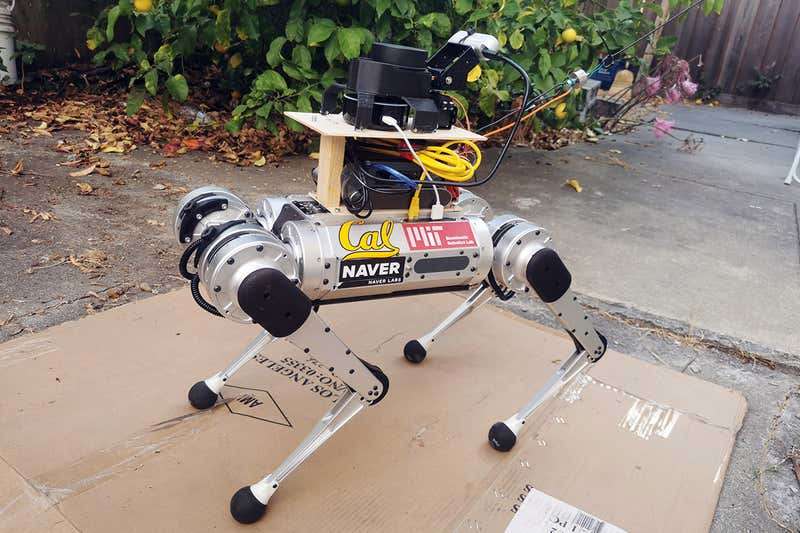Create a free profile to get unlimited access to exclusive videos, sweepstakes, and more!
No treats required: Robotic guide dogs for the blind could replace canine companions

Helping to supply a new type of mobility aid for the visually impaired, a team of researchers at the University of Berkeley has programmed a quadruped canine-like robot to safely guide persons around obstacles and through tight passages thanks to its onboard sensing equipment.
Details of this new laser-equipped invention were published at Cornell University's online scientific journal, arXiv.org, where project leader Zhongyu Li and his colleagues presented their initial work in creating an alternative to real guide dogs, which takes years and tens of thousands of dollars to train in order to transform them into capable companions for the blind.
Check out the demonstration video below and see how this agile android pooch performs...
Their new autonomous robot, based on an MIT Mini Cheetah model, is able to physically guide humans through narrow and cluttered spaces either with the leash taut or slack. Prior artificial guidance systems operate on wheeled platforms with heavy bases using actuated rigid guiding canes, which are rather limiting when it comes to maneuvering around more confining spaces or environments with hazardous objects lying about.
The University of Berkeley team proposed a unique design that begins with a leashed quadrupedal device able to alter its intrinsic dimension by loosening the leash to tiptoe around narrow corners and passageways trying to avoid any collision. Its guiding software can be automatically downloaded into the machines and updated over time.
This four-legged intelligent machine comes fully loaded with lasers and navigational cameras that let it map out terrain. The 2D LiDAR is used for robot localization and its depth camera is employed for human detection.
“Using a robotic guide dog, we can directly deploy our code from one robot to another,” Li told New Scientist. “As time goes by and the hardware becomes more affordable, we can actually use this kind of dog to help, to serve, humans.”


























